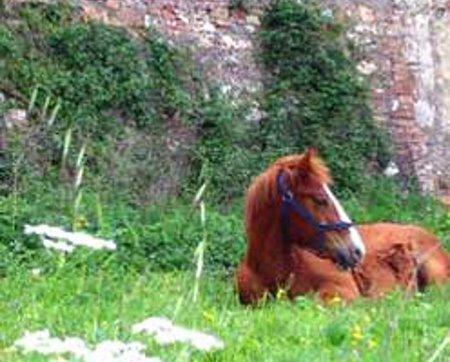Original article at www.gonomad.com
Flying into Florence, my seatmate was the curator of Italian Renaissance paintings at the Metropolitan Museum in New York. He was headed to the Uffizi Gallery to organize an art tour of master works in the United States.
I was headed south about 50 miles for a week’s visit to another of the country’s great treasures, and to discover how Italian landscape art is being preserved in the country.
A Working Farm
Lost in the burnt siena soils and green-gray hills of Tuscany lies the 1,100-acre organic farming community and nonprofit educational center of Spannocchia, where visitors can immerse themselves in workshops on Italian language, literature, art, crafts, Tuscan cooking and sustainable farming; help with the farming chores, grow vegetables, feed and care for the animals; or just lie poolside and enjoy the fruits of a working farm.
I was lucky enough to arrive on pizza night and gorge on a never-ending variety of delicious flat breads, laced with the farm’s olive oil and abundant meats and vegetables.
Sharecropping Society
Food is an important part of the experience. During my week the chefs served wonderful salads and seasonal vegetables grown in the gardens along with chicken, wild boar, pasta, sausages, venison, lamb, suckling pig and beef, all from the farm.
Thanks to the Cinelli family that owns and manages the 12th century property, Spannocchia retains much of the feel of the mezzadria or sharecropping society that characterized the area for over 800 years. Just 20 minutes south of Siena, it represents a way of life that is fast disappearing in Tuscany and Europe.
Dedicated to preserving native foods and livestock, Spannocchia has 80 of the last remaining 400 sheep indigenous to the area. The endangered breeds cultivated by the Noah’s Ark project include pigs, chickens, horses, cows and donkeys.
There is a renewable forestry project, a water-conservation program, bee keeping and a heavy emphasis on recycling and the composting of the soils.
Cheerful Consumption
The farm is close to self-sustaining, producing most of the food consumed by the community, including its own olive oil and red and white wines, which are cheerfully consumed each evening on the veranda of the castle while discussing the events of the day and watching the sun set over the farm and the magnificent Tuscan hills.
Copyright © 2014 by Go Nomad. This article was written by John Blanchette and originally published at www.gonomad.com


Friends Read Free